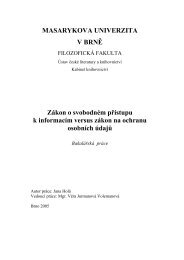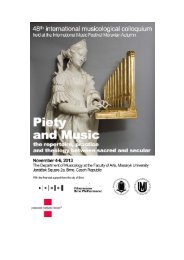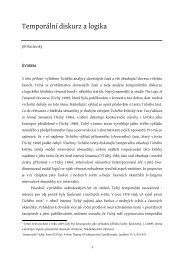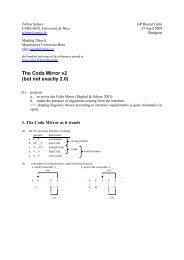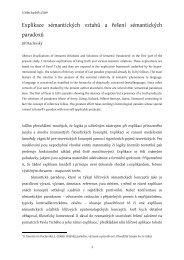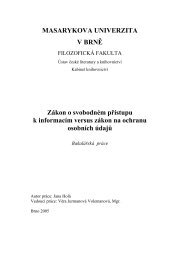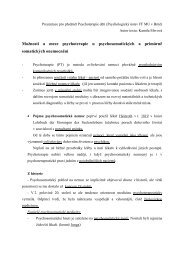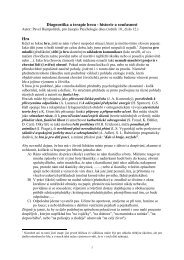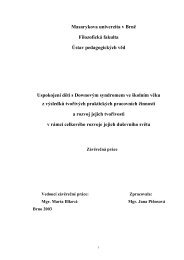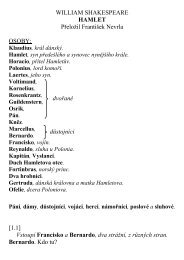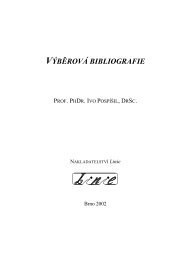SIASSI announcement images.pdf
SIASSI announcement images.pdf
SIASSI announcement images.pdf
Create successful ePaper yourself
Turn your PDF publications into a flip-book with our unique Google optimized e-Paper software.
SIAS Summer Institutes 2013/2014<br />
Scenes from the History of the Image:<br />
Reading Two Millennia of Conflict<br />
July 28 - August 9, 2013, National Humanities Center, Research Triangle Park, North Carolina, USA<br />
Summer 2014 dates TBA, Wissenschaftskolleg zu Berlin, Germany<br />
I. THE PROJECT: QUESTIONS & OBJECTIVES<br />
The purpose of this two-year transatlantic summer-seminar is to explore primary and critical writings<br />
related to the history of the image. It should be said at the outset that this discussion is not an attempt<br />
to run a seminar in art history. Rather, the objective is to trace how, in the course of Western history,<br />
<strong>images</strong> have functioned (and how their role has been conceptualized), first in religious practice and<br />
philosophical theology, and more recently in literature, philosophy, aesthetic theory, and<br />
phenomenology.<br />
At this time in history, Western culture is arguably awash in <strong>images</strong> to a degree never before<br />
experienced. Digital culture has made every image and visual artifact virtually accessible to a vast<br />
number of individuals in the developed and developing worlds. Elaborate databases such as ArtStor<br />
and Oxford Art Online, as well as general-purpose search engines (Google Images) facilitate the<br />
retrieval of visual materials with very little censorship or accountability interposing itself on the part<br />
of the provider or end-user, respectively. At the same time, the capacity of <strong>images</strong> (cartoons,<br />
photographs, paintings) to unleash public controversy by tapping into otherwise submerged religious,<br />
political, or cultural energies and antagonisms seems undiminished. More than most textual forms—<br />
whose impact is typically attenuated by the hermeneutic demands that their linear and propositional<br />
presentation makes on readers—<strong>images</strong> seem uniquely capable of bypassing or suspending a more<br />
guarded and reflexive interpretive appraisal.<br />
The traumatic force with which the <strong>images</strong> of the falling Twin Towers on September 11, 2001<br />
impacted and shaped the political imaginary of an entire generation of people in the United States and<br />
the Western world, or similarly iconic moments such as Robert Capra's famous photo of a soldier's<br />
death during the Spanish Civil War, Nick Ut's photo of a young Vietnamese child burned by napalm,<br />
Charlie Cole's 1989 snapshot of a young man in a white shirt blocking the advance of tanks in<br />
Tiananmen Square, Kurt Westergaard's 2005 cartoons of the Prophet Mohammed—all attest to the<br />
image's undiminished capacity for concentrating and unleashing vast reservoirs of moral and political<br />
energy. It thus does not surprise us to find political and religious establishments from around the world<br />
that are far more preoccupied with controlling (or even expunging) <strong>images</strong> than with articulating a<br />
coherent message or rationally engaging their perceived opponents. Among the more egregious<br />
instances of such practice might be the Afghan Taliban's March 2001 decision to detonate the early<br />
sixth-century Buddhas of Bamiyan, or the G. W. Bush administration's ban on releasing photos of the<br />
coffins of dead soldiers flown back from Iraq.
So as to understand the deeper histories that resonate in such controversies, and indeed set the formal<br />
and moral parameters for them, this seminar will seek to undertake an archeology of the image in its<br />
various dimensions: viz., as material object, as a medium (often in close competition with text), as<br />
formal-aesthetic artifact, and as the correlate of a distinctive kind of human intentionality. To that end, the<br />
2013 SIAS seminar will successively explore five historical and/or formal ways of considering the<br />
image—each time through a mix of primary and secondary literature.<br />
II. ORGANIZATION OF READINGS<br />
PART I addresses premodern discourse on the image in pre-Christian thought (Plato, Plotinus), Old<br />
Testament scripture, and philosophical theology up to Aquinas. The objective here is to highlight<br />
paradigmatic positions, such as St. Augustine's use of imago as a central feature of his later theology,<br />
or the early debates over iconoclasm in Western and Eastern Christianity (Gregory the Great, St. John<br />
Damascene, St. Theodore the Studite) and early Islam. We will also take a brief leap into the modern<br />
era to consider the (ironic) reappearance of iconoclastic fervor in T. Mann's short story "Gladius Dei."<br />
PART II will concentrate on the era beginning with the Reformation. We shall focus on connections<br />
between modernity's quest for self-legitimation and its philosophical, legal, and material attempts at<br />
expunging <strong>images</strong> (and image-based sacramental practice) from religious culture and public life. At<br />
the heart of this cluster is the question to what extent early modernity may be understood as a struggle<br />
between a textual, abstract, and increasingly anthropomorphic conception of knowledge with the<br />
image's persistent and uncanny ability to realize transcendent meanings in materially concrete and<br />
vivid form. This deepening struggle between a sacramental and a conceptual mode of knowledge<br />
dominates a variety of sixteenth- and seventeenth-century writings, such as the legally defined and<br />
state-enforced iconoclasm of Henry VIII and Edward VI, or the philosophical and theological<br />
arguments of Cramner, Zwingli, Calvin, Bacon, Hobbes, Milton, et al. Along with selections from<br />
Fox's Actes and Monuments, our discussion will also draw on select readings from recent critical work<br />
on modernity's underlying iconoclastic logic (Simpson, Duffy, Aston, et al.).<br />
PART III will take up the partial rehabilitation of the image during the Enlightenment. Here our<br />
attention will shift toward the emergent fields of historicism and aesthetics (in Vico, Shaftesbury,<br />
Reynolds, Lessing, Herder, and Kant). The genesis of these new modes of inquiry arguably correlates<br />
with the rehabilitation of the image insofar as historicism and aesthetics assist in quarantining <strong>images</strong><br />
from spiritual or transcendent meanings by foregrounding the image's formal and stylistic role within<br />
emergent, class-specific practices and conceptions of "taste." Concurrently, a distinctly vernacular<br />
"literary" tradition and canon crystallizes around new types of imagery that seem all but untainted by<br />
religious controversy or dogma. A case in point is the agglomeration of classical literary topoi in<br />
Gray's "Elegy" or the eclipse of (biblical) narrative in eighteenth-century discursive writing,<br />
descriptive poetry, and in the shrewdly "de-sacralized" new genre of landscape painting. Still, traces of<br />
the image's forgotten (or repressed) transcendent sources persist, as in the way that the rustic comedy<br />
of Gainsborough's The Harvest Wagon (1767) clearly pivots on our recalling the choreography of<br />
figures in Rubens' Descent from the Cross. A discussion of Kant's theory of the sublime, in which the<br />
image's apparent transcendence and defeat of discursive understanding is ultimately reversed by the<br />
second-level reflexivity of Vernunft, will round off this particular set of readings.<br />
PART IV takes up the nineteenth century's growing investment in the image's epistemological status.<br />
Hegel's discussion—both in the Encyclopedia (1818) and in his Aesthetics (1822)—of the transition<br />
from a symbolic (imagistic) to a textual (prosaic) concept of knowledge will be our point of departure<br />
here. At the same time, the implicit secularization narrative at work in Hegel's account is challenged.<br />
One instance of such a critique involves Coleridge's account of image and symbol as the unique<br />
mediation ("translucence") of a divine logos that cannot be captured in propositional form but, in fact,
is always presupposed by the discursive intellect. Another case study will take up an aesthetic of<br />
radical mimesis as developed in Ruskin's Modern Painters, pre-Raphaelite art, and in the journals and<br />
poetry of G. M. Hopkins. Here we can trace the beginnings of modern phenomenology, which,<br />
beginning with Husserl and extending all the way to Jean-Luc Marion's recent work, focuses on the<br />
image as a unique phenomenological datum. Some selections from Husserl's 1905 lectures on "Image<br />
Consciousness" (Bildbewusstsein) and Jean-Luc Marion on the "absolute givenness" of the "saturated<br />
phenomenon" will help us trace how nineteenth-century literary, aesthetic, and philosophical reflection<br />
engages the image in its own terms, rather than measuring it (positively or negatively) against a textual<br />
and discursive model of representation. This section will conclude with a discussion of Georges<br />
Rodenbach's 1892 novel Bruges la Morte.<br />
PART V will sample various twentieth-century theories of the image (phenomenology, existentialism,<br />
deconstruction, postmodern culture theory) in order to gauge to what extent our contemporary<br />
theoretical landscape is cognizant of (or, perhaps, oblivious to) the deep history of the image as a focal<br />
point of philosophical, theological, and aesthetic reasoning. To offer but one instance, might it be<br />
possible to read the aggressive textualism of American Deconstruction (as exemplified by de Man, J.<br />
Hillis-Miller, C. Jacobs et al.) as a (perhaps unwitting) reenactment of Reformation iconoclasm?<br />
Similarly, we will want to explore to what extent other accounts of the image might also inadvertently<br />
retrace a two-millennia-old debate regarding the (allegedly illicit) noumenal or transcendent<br />
aspirations or pretensions of <strong>images</strong>. Selections from W. Benjamin's Passagenwerk ("Arcades<br />
Project"), E. Auerbach (his essay "Figura"), Heidegger ("The Origin of the Work of Art") will be<br />
considered in conjunction with the recent upsurge of philosophical, theological, and aesthetic interest<br />
in <strong>images</strong> (Marion, Besançon, Bredekamp, Freedberg, Latour, Mascall, Mitchell, et al.).<br />
III. LONG-TERM OBJECTIVES<br />
A principal objective of the 2013 seminar will be to lay a deep and richly textured foundation for more<br />
specialized types of inquiry and research that we expect participants to pursue during the year<br />
following our first seminar. The 2014 seminar meetings would thus seek to devote more time to<br />
presentations, more individualized workshops, and to the discussion of further readings—which at that<br />
point would be more specifically targeted to the individual work that emerges. A complete<br />
Bibliography can be found at the website of the Wissenschaftskolleg.<br />
CONVENERS<br />
Thomas Pfau, Alice Mary Baldwin Professor of English & Professor of Germanic Languages and<br />
Literatures, Duke University<br />
David Womersley, Thomas Warton Professor of English Literature, St. Catherine's College, Oxford<br />
APPLICANT PROFILE:<br />
We welcome applicants from a wide variety of disciplines, including literary studies, history, art<br />
history, image sciences, history of science, philosophy, theology, and history of religion. Applicants<br />
from other disciplines are equally welcome if their research addresses questions related to the topics of<br />
the institute. Applicants should have received their Ph.D. in 2008 or later or be in the final stages of<br />
completing their Ph.D. They should have an institutional affiliation in the US or in Europe.
APPLICATION PROCEDURE<br />
To apply, send the following, in English, to the appropriate address below:<br />
- A completed application form http://www.wiko-berlin.de/<strong>SIASSI</strong>_calls<br />
- A curriculum vitae<br />
- A statement of up to 1,000 words (not counting cited references) detailing current research<br />
interests and past research and writing related to the institute topic<br />
- Two letters of recommendation<br />
Applications should be submitted no later than February 22, 2013. Letters of reference can be sent by<br />
e-mail directly to the relevant address. Candidates selected will be notified by March 31, 2013.<br />
Candidates should note that they are applying for two summer workshops: one in the United States<br />
and another in Berlin, and that successful applicants will be expected to attend both workshops. The<br />
working language of the institute is English.<br />
U.S. CANDIDATES SHOULD ADDRESS QUERIES AND APPLICATIONS TO:<br />
SIAS Summer Institutes<br />
c/o Elizabeth Mansfield<br />
National Humanities Center<br />
P.O. Box 12256<br />
Research Triangle Park, NC 27709-2256, USA<br />
Tel.: 919-549-0661<br />
Fax: 919-990-8535<br />
E-mail: emansfield@nationalhumanitiescenter.org<br />
http://nationalhumanitiescenter.org/sias/<br />
EUROPEAN CANDIDATES SHOULD ADDRESS QUERIES AND APPLICATIONS TO:<br />
SIAS Summer Institutes<br />
c/o Martin Garstecki<br />
Wissenschaftskolleg zu Berlin<br />
Wallotstrasse 19<br />
14193 Berlin, Germany<br />
Tel.: +49 30 / 89001 - 212<br />
Fax: +49 30 / 89001 - 200<br />
E-mail: garstecki@wiko-berlin.de<br />
http://www.wiko-berlin.de/<strong>SIASSI</strong>_calls
ABOUT THE SIAS SUMMER INSTITUTES (<strong>SIASSI</strong>)<br />
The SIAS Summer Institutes are two-year research programs for young researchers and treat<br />
interdisciplinary topics.<br />
The goal of the SIAS Summer Institutes is to sponsor joint interdisciplinary work by European and<br />
American researchers at an early stage of their career, thus fostering research networks and common<br />
activities. The idea is that cohort formation will, in the long run, contribute to close ties between<br />
research activities in Europe and the USA while simultaneously supporting the development of new<br />
fields of research.<br />
Every Summer Institute consists of two 10- to 14-day workshops held in consecutive years, alternating<br />
between Europe and the United States. A team of one European and one American researcher heads<br />
the Summer Institute, in which these two Convenors and 20 Fellows - generally 10 Europeans and 10<br />
Americans - as well as two to four outside specialists take part. Doctoral candidates near completion<br />
of their dissertation and post-docs may apply. Post-docs' doctorates should have been completed no<br />
more than five years earlier, and their research work should have addressed the topic in question.<br />
Participants receive a small stipend; travel and lodging costs are covered by the program. Accepting<br />
the stipend obligates the researcher to take part in both workshops.<br />
The SIAS Summer Institutes are sponsored by the SIAS (Some Institutes for Advanced Study), an<br />
association of some ten institutes for advanced study. Their Directors constitute the Summer Institutes'<br />
Steering Committee, whose tasks include determining the seminar topics and commissioning<br />
European and American researchers to organize and lead them. The Steering Committee's work is<br />
supported by a large network of outstanding researchers (Fellows and former Fellows of member<br />
institutions), as well as other international contacts.<br />
The Alexander von Humboldt-Stiftung and the Andrew W. Mellon Foundation jointly fund the SIAS<br />
Summer Institutes, whose organization in Europe is the task of the Wissenschaftskolleg zu Berlin and<br />
in the USA of the National Humanities Center.



